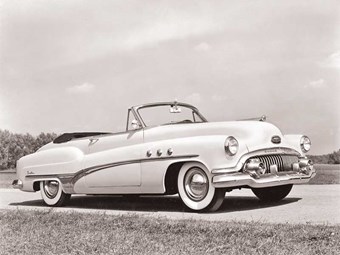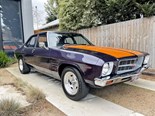Buick straight-eights 1946-1952: Buyers Guide
These attractive classics could torque their way out of anything.

|
|
Buyer's Guide: 1946 - 1952 Buick straight-eights
|
Buick straight-eights 1946-1952
WHAT IS IT?
Just eight weeks before the Japanese attack on Pearl Harbour, Buick had released the most exciting new shape in its 40 years. The all-new car had a sloping roofline and voluptuous mudguards that flowed to the front doors. Its elongated profile was emphasised by strips of stainless steel and an elegant grille design.
Wartime restrictions meant only 94,000 new Buicks were built and hardly any reached Australia until '46, powered by the 82kW/290Nm 4.1-litre straight-eight that had been around since 1937. US buyers could option a highcompression, long-stroke 123kW/372Nm 5.2-litre version.
Australian-assembled cars came as four-door Special and Super models with a three-speed manual. In the US, you could also buy a two-door Sedanette, convertible, and now ultra-rare Estate. Top of the range was the Roadmaster, with a 120mm-longer wheelbase and 5.2-litre engine standard. From 1949, the Roadmaster came with a Dynaflow automatic and cloth/leather trim. By '52, power steering was a $199 option.
To make way for Holden production, GM-H ceased Buick and Oldsmobile assembly in 1948. A '49 restyle produced a car that was lower, with guards flush with the doors, and distinctive 'portholes' that removed heat from the engine bay. By the '50s, the straight-eight was outdated against Cadillac, Lincoln and Chrysler V8s, but its legendary torque and silken power ensured strong sales with more than 400,000 sold in 1951 and 303,000 in '52.
The two-door Riviera ('52 pictured) was launched in 1949 with pillarless styling, two-tone paint and, by 1952, options like electric window and seat adjustment. By that time, the Roadmaster engine had been upgraded to 127kW, but sales flagged until a V8 arrived in 1953.
HOW'S IT DRIVE?
Starting an original straight-eight is a one-touch operation. Under the accelerator is a switch and when the pedal is pushed to prime the carburettor, the engine should fire. But cars with electrical gremlins are prone to 'flooding' so a separate starter is a good idea. The manual is a three-on-the-tree and once in top it rarely needs to be touched, such is the immense torque of the straight-eight.
Low gearing limits top speed of Australian-made cars to 135km/h, but imports with the larger engine will reach 160km/h. The unassisted steering fitted to most cars here should deliver reasonable response and road feel. A car that wanders at speed or under brakes needs a front-end overhaul. Brakes were barely adequate and in US tests a '52 Dynaflow took 77 metres to stop from 97km/h!
CHECKLIST
Any car with serious chassis rust will be beyond repair. Rust appears around windows, doors and floors and used panels are scarce. Engines should start easily and idle smoothly, clutch pressure plate fingers can warp, making gear selection hard. Reco lever-action shocks are available but brakes must be in top condition. Standard six-volt electrics are okay but wiring can be brittle and short circuit. New trim and carpet is available. Australian cars had electric wipers.
SPECIFICATIONS
1946 - 1952 Buick straight-eight
Body: 4dr sedan and wagon, 2dr hardtop, convertible
Engine: 4065cc or 5231cc, 8cyl, OHV, 16v
Power: 82kW @ 3600rpm*
Torque: 279Nm @ 2000rpm*
Weight: 1873kg
Gearbox: 3-speed manual, 2-speed automatic
Brakes: drums (f/r)
Price range: $8000-55,000
* 4.1-litre (1946 spec)
Unique Cars magazine Value Guides
Sell your car for free right here
Get your monthly fix of news, reviews and stories on the greatest cars and minds in the automotive world.
Subscribe

.jpg)





.jpg)



.jpg)



